Megalithomania
Tours
Presents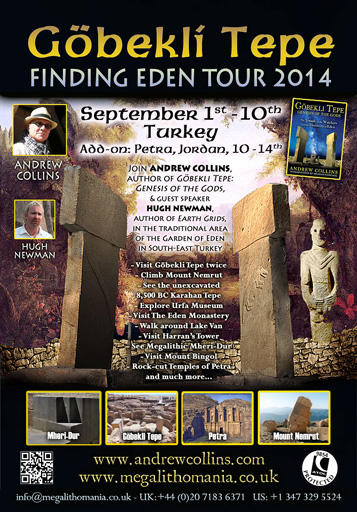
GOBEKLI
TEPE
FINDING EDEN TOUR
Monday, Sept 1st - Wednesday, Sept 10th 2014
Explore
Göbekli
Tepe and
Discover the Garden of Eden
10 DAYS: Göbekli Tepe - Karahan Tepe - Harran - Karahan Tepe - Nemrut Dag - Çayönü - Sanliurfa: Nimrod's Castle, Pools of Abraham, Archaeological Museum - Diyarbakir Museum - Aktamar Island Church, Lake Van - Gate of Mehr - The Garden of Eden Monastery, Mus - Fountain of Immortality, Mushka - Bingöl Mountain, terrestrial Paradise and birthplace of the Anunnaki and Watchers
(start at Ankara)
4-DAY OPTIONAL EXTENSION: Experience Petra in Jordan and climb Jebel Madhbah,
the real Mount Sinai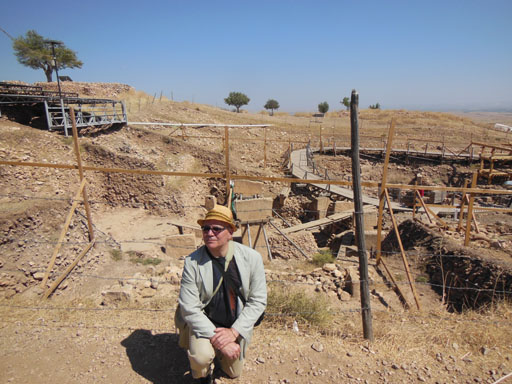
Andrew
Collins at Gobekli Tepe
in 2013
ITINERARY
DAY ONE: Monday, Sept 1st. Fly into Sanliurfa airport. Settle into hotel for evening’s orientation and introductory presentation with Andrew Collins and Hugh Newman. NOTE: Flight departs Istanbul Attaturk airport at 16.30.
DAY
TWO: Tuesday, Sept 2nd. After breakfast visit the Sanliurfa Museum of archaeology
and culture. Lunch. After lunch visit Nimrod’s Castle, the Pools of Abraham
and the cave shrine where the great prophet was born. Arranged evening meal. Talk
afterward by Andrew Collins.
PLEASE NOTE THAT
CURRENTLY SANLIURFA'S MUSEUM IS CLOSED AND IS EXPECTED TO REOPEN BY SEPTEMBER.
HOWEVER, BASED ON THE ASSUMPTION THAT IT MIGHT STILL BE CLOSED THEN, WE HAVE ADDED
AN EXTRA SITE TO THE ITINERARY IN THE FORM OF KARAHAN TEPE, A WORTHY REPLACEMENT.
WE SHALL GO TO KARAHAN NOW REGARDLESS OF WHETHER THE MUSEUM IS OPEN OR NOT.
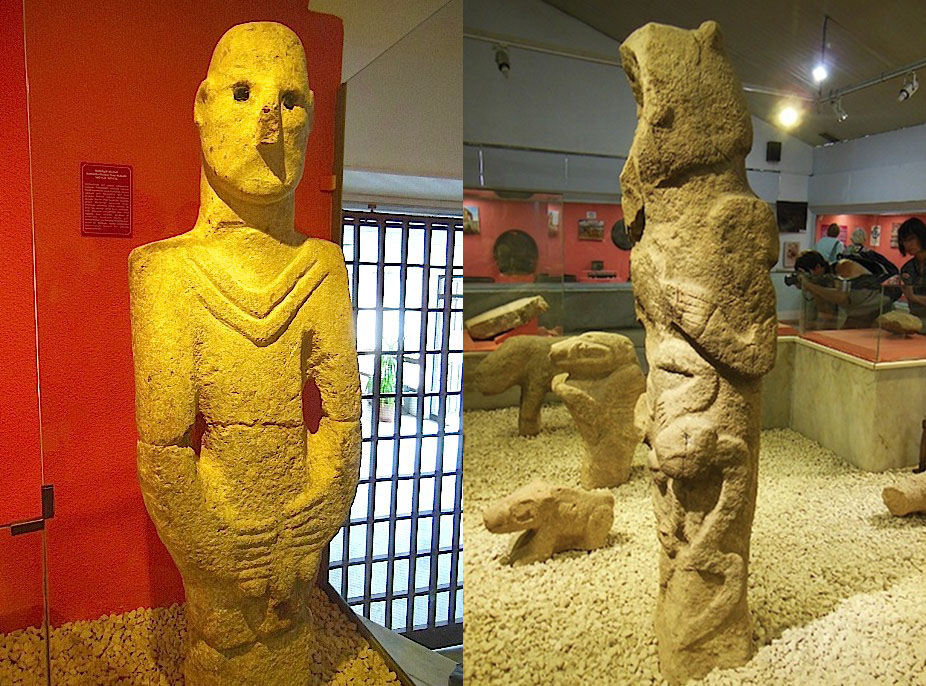
Above left, early Neolithic statue, c. 9000 BC, in Sanliurfa's archaeological museum.
Above right, stone totem pole from Gobekli Tepe in Sanliurfa's archaeological museum
 | 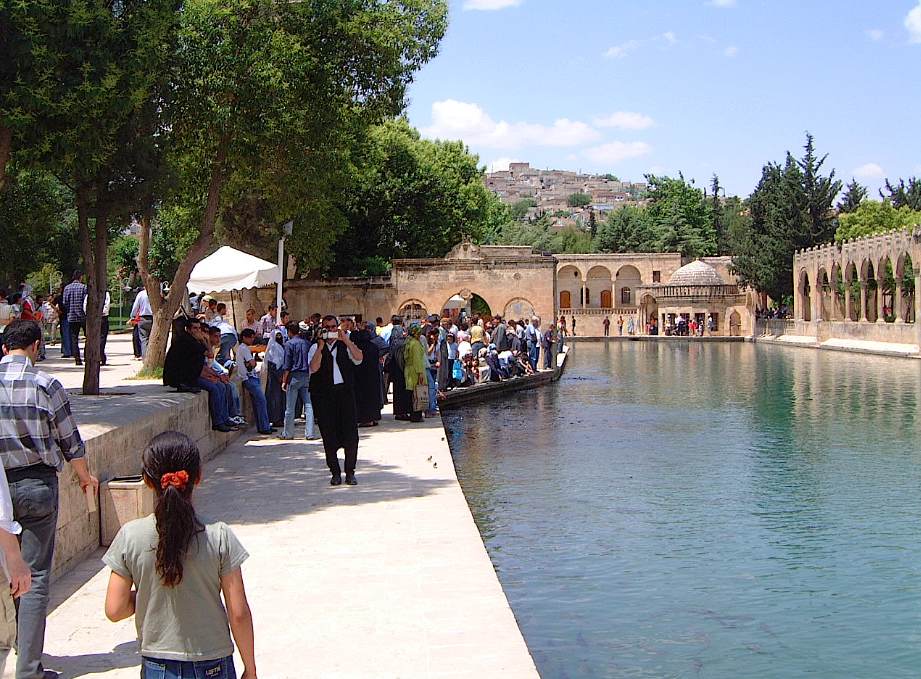 |
Left,
Nimrod's Castle, Sanliurfa. Right, the Pools of Abraham, Sanliurfa.
DAY THREE: Wednesday, Sept 3rd. After breakfast visit Gobekli Tepe, the world’s oldest temple complex. Lunch in Sanliurfa. In the afternoon visit Harran, the 8,000 year old city of the Sabians, with links to the Watchers of the book of Enoch. Arranged evening meal. Talk by one of the speakers.
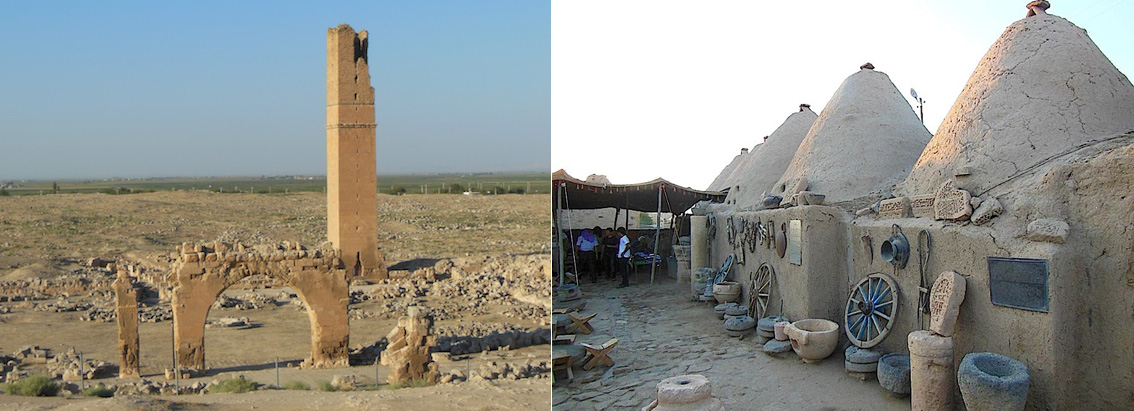
Left, the ruins of the Paradise Mosque, Harran. Right, beehive huts at Harran.
DAY
FOUR: Thursday, Sept 4th. After breakfast visit Gobekli Tepe for a second time,
this time without a guide so that you can enjoy the site on a more personal level.
After lunch visit Sogmatar, site of the Seven Planetary Temples of the Sabians
in the Tektek Mountains (around 80 km east of Sanliurfa. Return to Sanliurfa for
overnight.

Above left, Göbekli Tepe's Enclosure D. Above right, Enclosure D's Vulture Stone (Pillar 43).
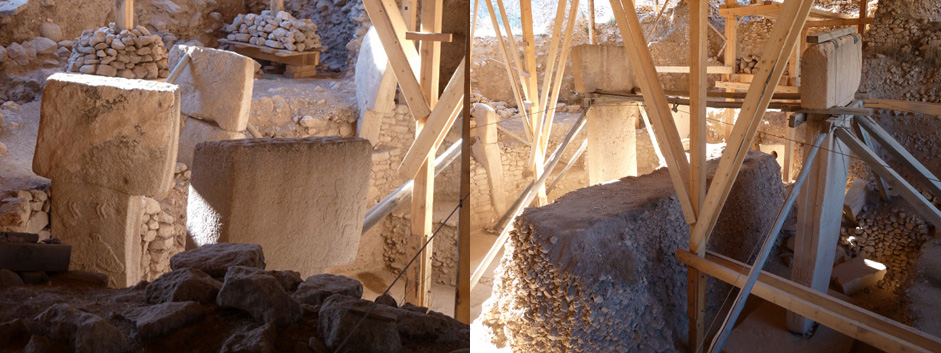
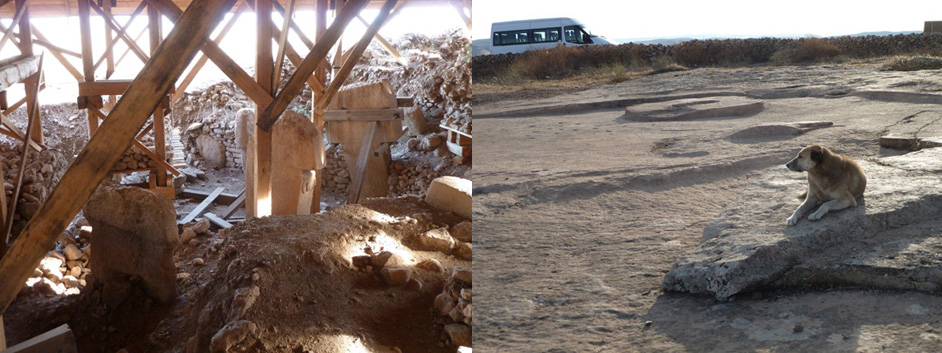
Top left & right, Göbekli Tepe's Enclosure D. Below left, Göbekli Tepe's Enclosure A, and, below right, Göbekli Tepe's Enclosure E - the Rock Temple, complete with guardian dog.
Below left, the view across the valley of Sogmatar. Below right, Sogmatar's temple of Saturn.
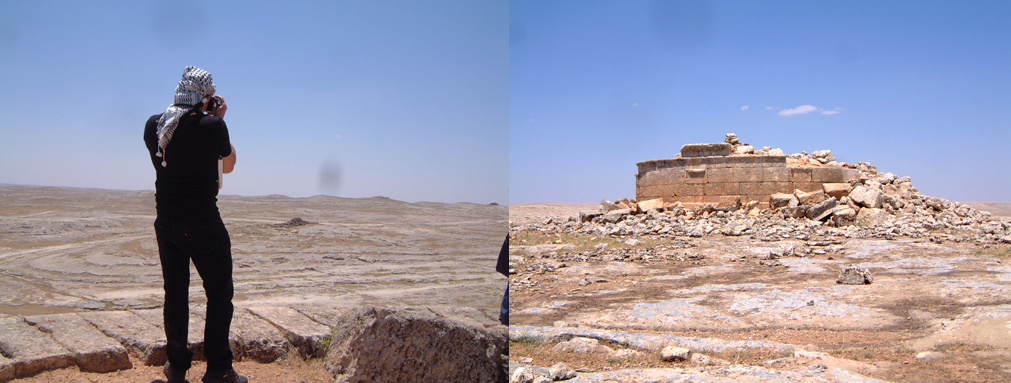
DAY FIVE: Friday, Sept 5th: After breakfast depart for Adiyaman. Visit Cendere Bridge, Karakus Timulus and Arsemia. Check into your hotel for a short rest before climbing up to Mt. Nemrut, the mausoluem tomb of Antiochus I, the king of Commagene, for sunset. Overnight in Mt. Nemrut.
DAY
SIX: Saturday, Sept 6th. After breakfast depart for Çayönü near
the
town of Ergani / See the site of the early Neolithic complex and visit the nearby
cave tombs, tunnels and rock platforms, which some believe date to Neolithic times.
Lunch in Ergani area. Then drive to Diyarbakir, and visit its archaeological museum.
Overnight in Diyarbakir.

Above left, foundations and standing stone at the archaeological site of Çayönü. Above right, view across to Çayönü. Below, left Andrew Collins inside Cayonu's deep cave shaft with sunlight reaching its interior. Right, carved lion at Çayönü.

DAY SEVEN: Sunday, Sept 7th. After breakfast depart for Mus. Visit the ruins of Mus's previously unknown Garden of Eden monastery overlooking the Euphrates river. Journey on to Muska. In the afternoon see Bingöl Mountain, the original Mountain of God, from which flows key sources of three rivers of Paradise. Visit the Fountain of Hizir (al-Khidr), otherwise known as the Waters of Life, near the town of Muska. Here Alexander ended his search for the Fountain of Immortality. Drink from the Waters of Life beneath the shadow of the Mountain of Paradise, and honour the Alevi saint Hizir (al-Khidr).
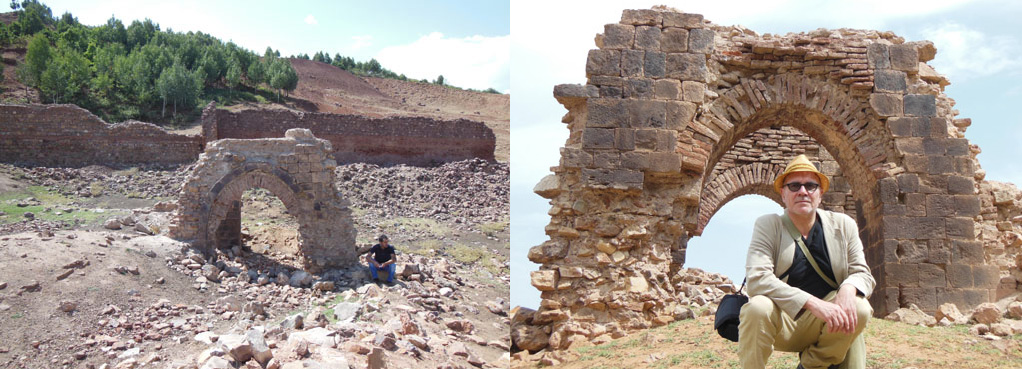
Above left, Mus's Garden of Eden monastery. Above right, Andrew Collins at the Eden monastery. Below left, the Waters of Life and Fountain of Paradise at Muska, the original site of Dilmun. Below right, Bingol, the real site of the Mountain of God, and the birthplace of the Watchers and Anunnaki in eastern Anatolia.
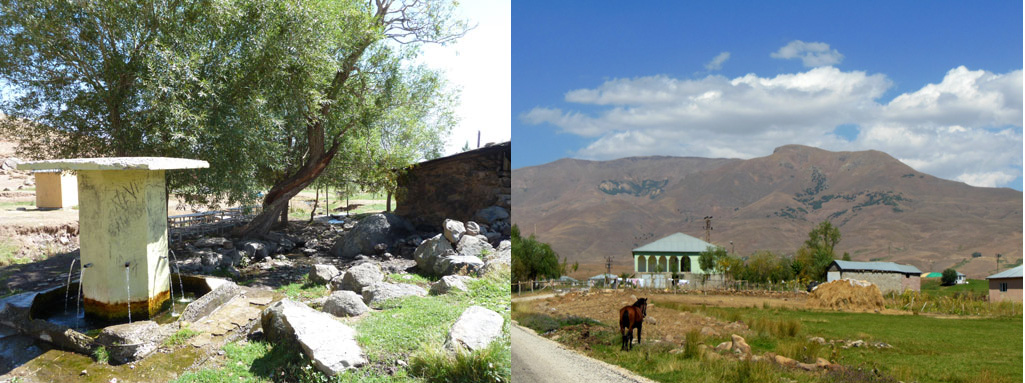
DAY
EIGHT: Monday, Sept 8th. After breakfast leave Mushka. Journey past the other
Nemrut
Dag, King Nimrod’s burial place, and visit Aktamar (or Akdamar)
Island on Lake Van, where we
enter the only active Armenian church in Turkey.
Stay night in the city of Van.
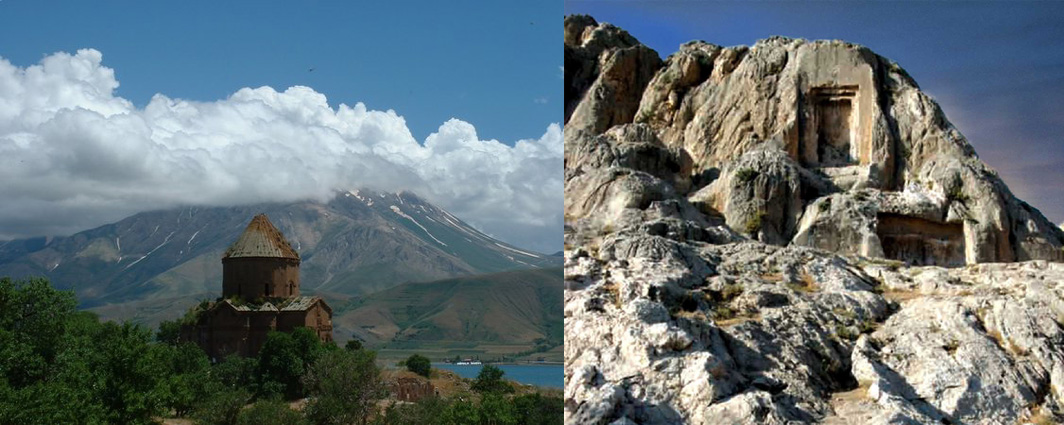
Left, the Armenian Church of the Holy Cross, Akhtamar Island, Lake Van (Pic Courtesy: Wiki Commons Agreement). Right, the Gate of Mehr (Armenian: Mheri Dur), a doorway to the otherworld by Lake Van (pic courtesy: PeopleofAr).
DAY NINE: Tuesday, Sept 9th. After breakfast visit Mheri-Dur, (the "Gate of Mehr"), a huge rock-cut mountain gateway overlooking Lake Van. Carved by the local Urartian civilization, it
was said to be the entrance to the otherworld. See its rock-cut inscription, which lists
no less than 79 deities from Assyria, Urartu, Persia and even from the Vedic traditions
of India. Visit Cavustepe and time-permitting Hosap Castle. Return to Van for
overnight.
DAY TEN: Wednesday, Sept 10th. After breakfast fly out of Van Airport back to Istanbul.
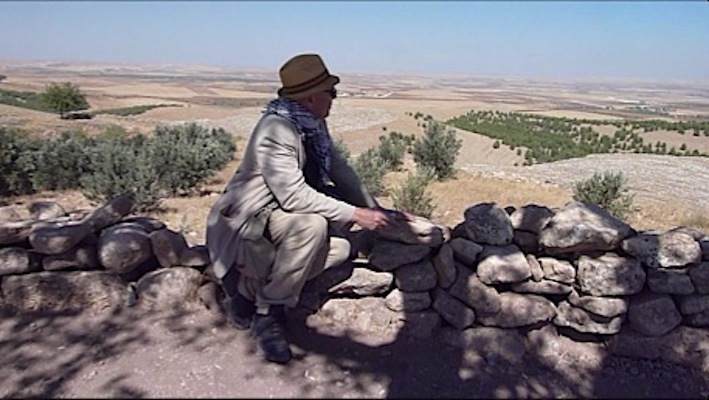 | 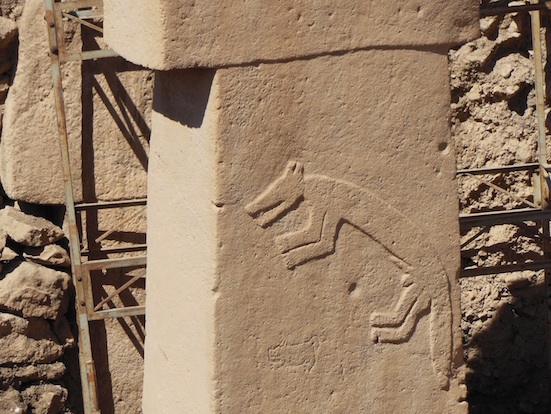 |
Left,
Andrew taking a break beneath the fig-mulberry tree that caps the summit of Göbekli
Tepe.
Right, leaping fox on a pillar in Göbekli
Tepe's Enclosure B.
PLEASE
NOTE: THE TOUR NOW INCLUDES
GOBEKLI TEPE'S SISTER SITE, KARAHAN TEPE

Left,
stone avenue at Karahan Tepe. Right, Karahan's unfinished monolith, 18 feet (5.5
m)
in length and nearly 6 feet 6 inches (2 m) in width, and weighing as much
as 15-20 tonnes.
Discovered as recently as 1997, Karahan Tepe might be described as Gobekli Tepe's sister site. Located in the Tektek Mountains, some 40 miles from Sanliurfa it is an early Neolithic stone sanctuary constructed on an elevated platform some 10,000 to 10,500 years ago. A series of stone avenues ascend toward an exposed area of bedrock covered in cupules (bored cup marks), twin holes and rock-cut cisterns. Everywhere are fragments of cut and dressed stone from porthole stones and standing pillars. More remote than Gobekli Tepe, Karahan Tepe possesses an eerie ambience that tells of rites and rituals during some forgotten age that archaeology might one day unravel. From the summit of its northern knoll, during the epoch of its construction the observer would have been able to watch the stars of Cygnus and the Milky Way set into a nearby tabletop mountain peak.

Left,
standing pillars forming part of a stone avenue at Karahan Tepe.
Right, Andrew
Collins with a fragment of a porthole stone at Karahan Tepe.
PRICE
INCLUDES: - 2 Domestic Airline Tickets (Istanbul – Urfa & Van - Istanbul
) - 4 Nights Stay in Urfa Hilton Garden Inn Hotel B & B - 1 Night stay in
Euphrat Hotel Mt. Nemrut HB - 1 Night stay in Diyarbakir B & B - 1 Night stay
in Mus Hotel B & B - 2 Nights stay in Van Tamara Hotel B & B - Transportation
in comfortable A/C Buses - Specified museum entrance fees - Meals specified -
24 hours professional English Speaking guide - Expenses of the guide & driver
DOES
NOT INCLUDE: - Drinks during meals - Tips - Visa fee - Any other item not explicitly
stated in inclusions above
Gobekli
Tepe Early
Bird Price per person for the first five people to book £2150
($3650) per person Before booking click here to read the terms and conditions Our
travel agents can help you with booking flights to and from your destination PRICE
FOR FIVE-DAY EXTENSION £ 875 ($ 1500)
|
GOBEKLI
TEPE FINDING EDEN TOUR
OPTIONAL 4-DAY EXTENSION
TO
PETRA AND MOUNTAIN OF MOSES
Thursday, Sept
11th - Sunday, Sept 14th
DAY ONE: Thurs, 11th. Meet
Queen Alia International Airport, transfer to hotel in Petra
Over Night
DAY
TWO: Friday, 12th. After breakfast, Start Visit to Petra, Starting from Entrance
– Take a horse ride for Around 300 Meters till The Start of the Siq (This
is not recommendable for Elderly People) , then Go Through Siq ( 01 Kilometer
on Feet) Till Reaching Treasury – Stop for Viewing the Site – Then Proceed
to Nabatean Tombs, Roman Theater, Colonnaded Street and climb Jebel Madhbah, the
true site of Mount Sinai, where Moses received the Commendment of Yahweh –
Back to Entrance – Proceed to Hotel for Over Night
(BREAKFAST)
DAY
THREE: Saturday, 13th. After breakfast, start second visit of Petra including
Ain Musa (the well of Moses, where Moses hit the rock and water came forth), Monastery,
Wadi Farasa – Back to Hotel in Petra for Over Night
(BREAKFAST)
DAY
FOUR: Sunday, 14th. After Breakfast, Pick up from Hotel , Transfer to Queen Alia
Airport – Drop off in Airport for your departure flight -End of Our services
(BREAKFAST)
If
you have any questions regarding any aspect of the tour, then contact either Andrew
Collins or Hugh Newman at Megalithomania
Tours, and we'll try our very best to help you.
Megalithomania
tours are no ordinary tours. They are voyages of discovery, quests for the answers
to the mysteries of life, creating unforgettable moments in people's lives that
are truly unique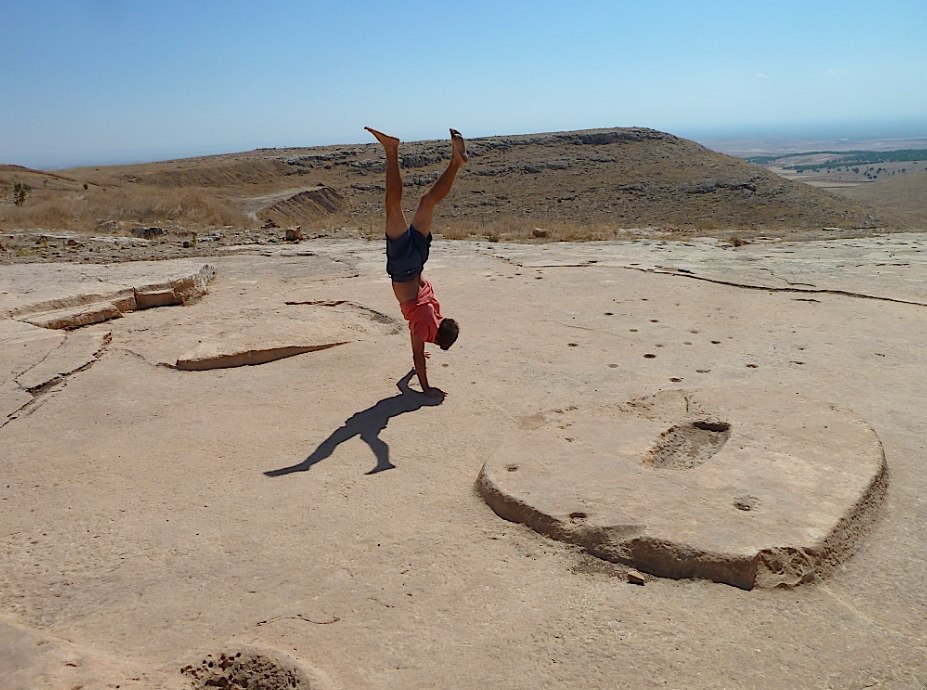
Göbekli
Tepe's Enclosure E
The
Finding Eden Tour coincides with the release of Andrew Collins' new book
ON
SALE NOW | 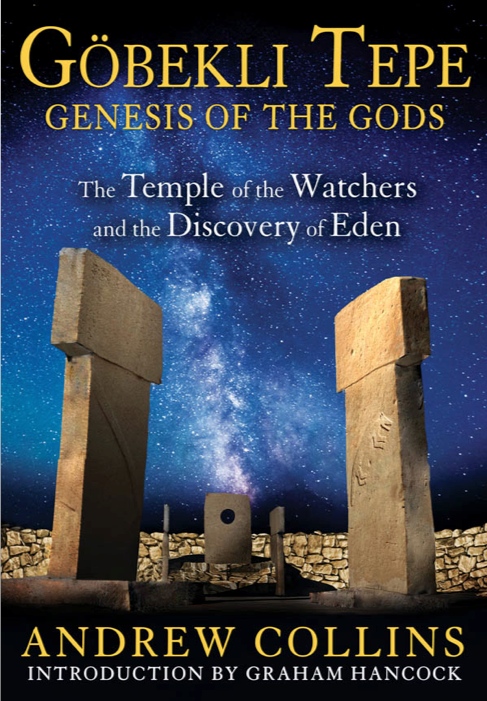 |
Göbekli
Tepe is a name familiar to anyone interested in the ancient mysteries subject.
Billed as the oldest stone temple in the world, it is composed of a series of
megalithic structures containing rings of beautifully carved T-shaped pillars.
It sits on a mountain ridge in southeast Turkey, just 8 miles (13 kilometers)
from the ancient city of Urfa, close to the traditional site of the Garden of
Eden. Here, for the past ten thousand years, its secrets have remained hidden
beneath an artificial, belly-shaped mound of earth some 330 by 220 yards (300
m by 200 meters) in size. Agriculture and animal husbandry were barely known when
Göbekli Tepe was built, and roaming the fertile landscape of southwest Asia
were, we are told, primitive hunter-gatherers, whose sole existence revolved around
survival on a day-to-day basis.
So
what is Göbekli Tepe? Who created it, and why? More pressingly, why did its
builders bury their creation at the end of its useful life?
Click
here for more information on
Göbekli Tepe:
Genesis of the Gods by Andrew Collins
For
more information on Göbekli
Tepe:
Göbekli Tepe's Cosmic Blueprint by Andrew Collins
Andrew
defines Göbekli Tepe's cosmic blueprint, showing that it is aligned to the
Milky Way's Dark Rift and the bright star Deneb in Cygnus.
One Week in Kurdistan by Andrew Collins
Andrew's
epic journey in eastern Turkey in May-June 2004, visiting some of the sites that
will feature in the Origins of Civilization tour in September, including Harran,
Sanliurfa and Göbekli
Tepe.
![]()
![]()